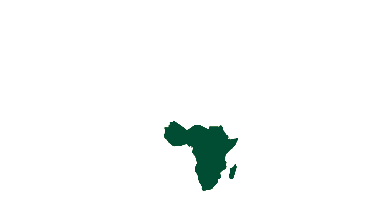Case study
2024 • City of Windhoek Municipality Wastewater treatment for potable reuse in Windhoek
The city of Windhoek in Namibia has been a global pioneer in the reuse of treated wastewater for drinking purposes through its direct potable reuse (DPR) facility. Operational since 1968, the DPR system was born out of necessity in a semi-arid region with severe water scarcity and no perennial rivers nearby. By utilizing advanced treatment technologies and a multi-barrier approach, the facility now provides 35% of the city’s drinking water. Windhoek’s innovative approach to water reclamation serves as a model for sustainable water supply solutions in resource-constrained regions.
Recovered Materials & Products
Water
Waste Streams
Wastewater
Confirmed countries
United States of America


Background and Context
Location: Windhoek, Namibia, located in a semi-arid region with an annual average rainfall of 360 mm.
Resource Stream: Wastewater from households, treated and reclaimed for potable reuse.
Challenges:
- The city has no perennial water sources, and the nearest river is over 700 km away.
- Rapid urban population growth has continually increased water demand.
- Recurring droughts exacerbated the challenge of securing a sustainable water supply.
Technologies/Methods Used:
- Ultrafiltration: Utilized as part of the multi-barrier treatment to eliminate pathogens and particulates.
- Granular Activated Carbon Filtration (GAC): Used to remove organic pollutants, improving water quality.
- Multi-Barrier Treatment: Combines operational, non-treatment, and treatment processes to ensure water safety.
Includes blending reclaimed water with natural sources to maintain high-quality standards. - Research and Innovation: Extensive research partnerships, particularly with the Water Research Commission in South Africa, have guided technological advancements and system upgrades.
Implementation Steps
- Initial Development: The first DPR facility, with a capacity of 4.8 million liters annually, was commissioned in 1968.
- Facility Upgrades: Major upgrades in the 1970s and 2002 increased capacity to 21,000 cubic meters per day and incorporated advanced treatment processes.
- Crisis Management: During the 2014–2016 drought, the DPR system became the primary water source as surface water supplies diminished to just 3% of total demand.
- Ongoing Monitoring: Continuous monitoring and operational barriers ensure the safety and reliability of the DPR system.
Outcomes and Impacts
The Windhoek DPR facility provides drinking water to over 350,000 residents, meeting 35% of the city’s needs with a daily capacity of 21,000 cubic meters. By blending reclaimed water with natural sources, the system maintains high safety standards while addressing recurring droughts and water scarcity. The multi-barrier treatment approach has effectively mitigated health risks, ensuring compliance with international water quality guidelines.
The facility’s resilience was particularly evident during the 2014–2016 drought, when DPR became the city’s main water source. The project has demonstrated economic viability through reduced dependency on external water sources, avoiding costly alternatives such as long-distance water imports or desalination. Public trust, built over decades of reliable operation and transparent communication, remains a cornerstone of its success.
Lessons Learned
Windhoek’s experience emphasizes the importance of robust technology, public trust, and consistent quality assurance in direct potable reuse. The integration of multiple treatment barriers proved essential for mitigating risks associated with contaminants and maintaining compliance with safety standards.
Long-term public acceptance was achieved through transparent communication and reliable operations, reinforcing trust in the reclaimed water. Collaborative research with partners like the Water Research Commission enabled technological advancements and continuous improvement. The facility serves as a replicable model for other cities facing similar water scarcity challenges, provided that local needs and cultural contexts are taken into account.
Learn more
The text of the case study is available at the link below:
https://files.grida.no/sdm_downloads/1146-case-study-2/
This case study is extracted from the publication linked below: "Wastewater - Turning Problem to Solution", UNEP (2023)
https://www.unep.org/resources/report/wastewater-turning-problem-solution#:~:text=This%20new%20report%2C%20%E2%80%9CWastewater%20-,blocks%2C%20described%20in%20the%20publication.
Technologies
Ultrafiltration
Themes
Capacity building
Technologies